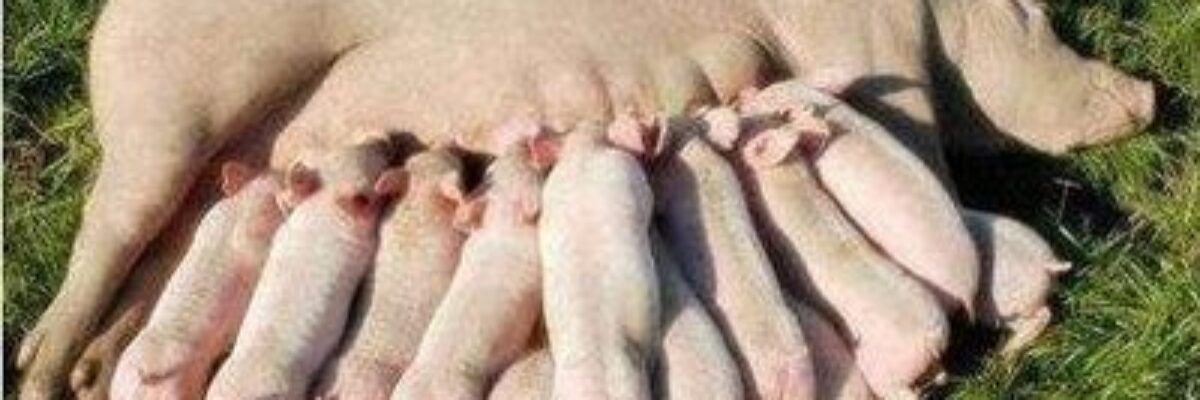Categories
Recent Posts
- Do these 7 things in spring pig breeding to reduce the number of pigs getting sick!
- Five ways to save money raising sheep!
- How to treat piglets without food? How do piglets lose weight without eating?
- In spring, the incidence of rumen food accumulation in cattle is high, pay attention to strengthen prevention and control!
- How to treat the fecal water of pig farms? These methods are worth learning
- What are the characteristics of black nose sheep? What food does black-nosed sheep not eat?
- Six things must be done to raise cattle in spring!
- What are the symptoms of cattle anthrax? Will cattle get sick after using anthrax vaccine?
- Summer is hot! How to prevent heatstroke and reduce the temperature of dairy cows?
- What is the reason for lack of manganese in cattle? What should cattle do if they lack manganese?
Feeding and management methods of sows in winter

How to raise sows in winter? We all know that the management of sow breeding is quite different from that of finishing pigs, because of their different habits and nutrition requirements. Especially in winter, the weather is cold and the time of day is short, so the light time is less, and the breeding and management of sows is particularly important. Now let’s look at the breeding and management methods of sows in winter?
- Dry and humidity regulation of pig house
The northern autumn and winter are dry and dusty, which stimulates the mucous membrane of pigs. Pigs, especially fat pigs, are prone to cough and sneeze, and the pathogen is more easily spread when attached to dust. Therefore, it is not allowed to greatly reduce the humidity of the pigsty in order to keep warm, resulting in the reduction of feed remuneration, and even the misjudgment of disease. - Ventilation and heat preservation of pig house
It is difficult to do a good job in the pig farm in winter because of the relationship between ventilation and heat preservation. Ventilation is necessary because the excessive harmful gas in the house will not only directly affect the respiratory mucosa system, but also lead to the reduction of feed intake and immunity of pigs. Of course, ventilation should not be carried out casually. It should be carried out in sunny afternoons, that is, at the highest temperature of the day. - Select appropriate feeding method.
After pregnancy, sows are vulnerable to death due to various factors at the initial stage of implantation of fertilized eggs within the 9-13 days, which is the first death peak; The second death peak appeared on the third day after pregnancy, and the number of two deaths accounted for 30% – 40% of the total number of fertilized eggs; The third death peak occurred 60-70 days after mating. The feeding of pregnant sows should vary from pig to pig, and the following three methods are generally used in production:
(1) . Grasp both ends and look in the middle. This method is suitable for multiparous sows with poor body condition. That is to say, the feed should be increased 20 days before and 10 days after breeding. After the body condition recovers, the feed should be mainly green fodder, which should be fed according to the feeding standard, until 80 days after pregnancy, and then the concentrate should be added, but the nutrition level in the later stage should be higher than that in the earlier stage.
(2) . This method is suitable for multiparous sows in good condition before breeding. That is, in the first trimester of pregnancy, feed more green fodder, and then feed more refined fodder.
(3) . “Step by step”. This method is suitable for primiparous sows and sows bred during lactation. That is, in the first trimester of pregnancy, the proportion of concentrated feed is gradually increased, and the protein and minerals in the feed are correspondingly increased. However, it should be noted that the feeding amount of sows should be reduced by 10% – 20% one week before delivery. - Controlled feeding
Nutrition is very important. Generally, we need to obtain food from the feed. First, we need to meet the growth and development needs of the fetus, so that we can provide ourselves with the necessary energy and protein feed and supplement trace elements and minerals. Pay attention to the feed, and do not feed moldy food or frozen water. Some moldy food is easy to be toxic or irritating, which will cause miscarriage in sows, and pay attention to the consistency of feed. Do not change the formula and variety frequently, which may lead to maladaptation, anorexia or non-eating. It is better to let sows drink warm water, and to achieve a reasonable allocation of green roughage.
These are some breeding and management methods for sows in winter. I hope they can help you raise sows well and make more money.
